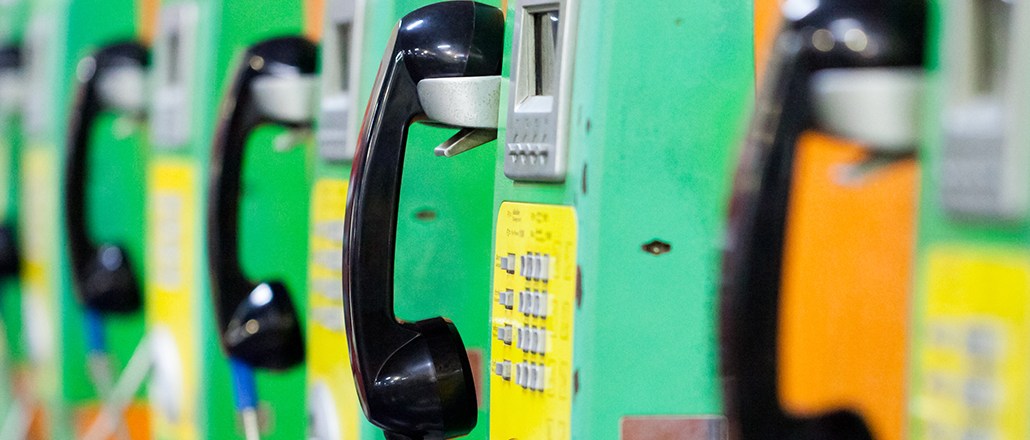Save 50% on a 3-month Digiday+ membership. Ends Dec 5.

Today, a smartphone is a phone nearly in name only. It’s a gaming device, a text-message platform and a mobile web browser. But a phone? Rarely. At first glance, it seems like the phone call’s place in commerce has been all but eclipsed by apps and the mobile web. Hell, Seamless built their delivery empire by elbowing the humble phone call out of the take-out industry.
The industry is buzzing about a more connected ecosystem–mobile-first, connected everything–while the number of households with landlines has fallen from 90 percent ten years ago to less than 60 percent in 2014.
But marketers might be surprised to learn that in some categories, consumers of all ages are still picking up the phone to talk to someone. Yes, even Millennials. In fact, Google reports that “click to call” is an essential feature for mobile search users. According to their research, about 70 percent of searchers use the function.
From making reservations to getting personalized attention for complex buying decisions (and then making the purchase), the phone call is hanging on as the best substitute for a face-to-face experience. Here are three situations where consumers have put digital customer service on hold.
Emergencies call for immediate answers
For some consumers, waiting just isn’t an option. As a home restoration business specializing in water damage and disaster recovery solutions, 911 Restoration takes this to heart.
While many consumers discover which of the company’s 65 locations is closest through smartphone-based searches and online directories, prospects will almost always end up calling. More than 300 calls are fielded daily.
Ad position: web_incontent_pos1
“When people are going through a disaster, they need an immediate response,” explains 911 Restoration’s founder Idan Shpizear. “They’re not going to fill out a form or wait for an email. If they don’t hear back from us with 2-3 seconds, they’ll call someone else.”
In the midst of their own emergencies, prospects who reach out to 911 Restoration are often in a distraught state of mind and unable to fully articulate what they need. A call can cut through this confusion and get to what’s essential.
“The entire call to conversion process spans minutes,” says Miri Offir, CMO at 911 Restoration. And 97 percent of 911 Restoration’s incoming calls convert to jobs. “We have technicians out in the field within 45 minutes of prospects calling us.”
A new definition of “car service”
In the early days of the web, automotive dealers and their advertisers could expect their sites to generate a steady stream of completed lead forms. But as the industry grew more transparent and product information became more readily available, this reliable source of prospects dried up.
Ad position: web_incontent_pos2
Instead, phone calls have emerged as a top indicator of a car purchase, second only to a showroom visit. “Consumers have way more information now,” said Larry Barditch, vp of digital strategy and innovation at MSA Advertising. “So now they just pick up the phone to see if a vehicle is in stock, or they just show up at the dealership.”
While many of these calls are logistical, asking for directions to the dealership, many involve questions that websites can’t always answer, like the availability to custom colors and models.
Putting the phone number front-and-center in automotive marketing has become essential. Using a system of dynamic phone numbers, click-to-call technology displays unique phone numbers tied to specific keywords and campaigns, making it easy for dealers to balance their inventory against interest and demand. And when paired with other data, like name and email, the line can be traced all the way from call to purchase.
“Even Millennials, who everyone thinks is this segment hiding behind their technology, still wants to talk to a human being,” said Barditch. “More and more, it’s through a mobile device using click-to-call. If you don’t make that easily accessible, especially to that generation, you’re going to lose the opportunity to do business with them.”
When money matters, have a conversation
Then there are those transactions that require more of a thoughtful back and forth between buyers and sellers. When an in-person meeting about a complex purchase isn’t feasible, a phone call is the next best solution.
Take financial services: When consumers or small business owners apply for a loan, they typically share details about their income, credit histories and risk factors. The evaluation process is extensive and complicated, so some startups like SnapCap, a performance-based lender, would rather talk it out.
“The ability to have a phone conversation to examine unique risk factors and get the applicant into the right product for them is essential to this process and to the speed of the loan funding,” said Hunter Stunzi, president of SnapCap.
In fact, every SnapCap applicant must undergo a thorough phone interview. These conversations help the team evaluate candidates who may not fit an exact financial profile or mold but still qualify for service.
“The phone will always have a place in the business,” said Stunzi. “Even as businesses continue to push people online and remove the phone from the sales process, that will never happen for us.”
Interested in learning more about measuring phone calls from mobile advertising? Download Marchex’s new paper on paid search – The $4 Billion Blind Spot.
More from Digiday

Ulta, Best Buy and Adidas dominate AI holiday shopping mentions
The brands that are seeing the biggest boost from this shift in consumer behavior are some of the biggest retailers.

Digiday+ Research Subscription Index 2025: Subscription strategies from Bloomberg, The New York Times, Vox and others
Digiday’s third annual Subscription Index examines and measures publishers’ subscription strategies to identify common approaches and key tactics among Bloomberg, The New York Times, Vox and others.

U.K. retailer Boots leads brand efforts to invest in ad creative’s data layer
For media dollars to make an impact, brands need ad creative that actually hits. More CMOs are investing in pre- and post-flight measurement.
Ad position: web_bfu